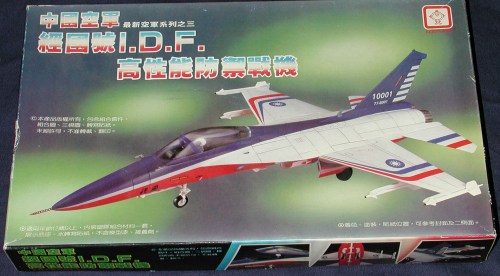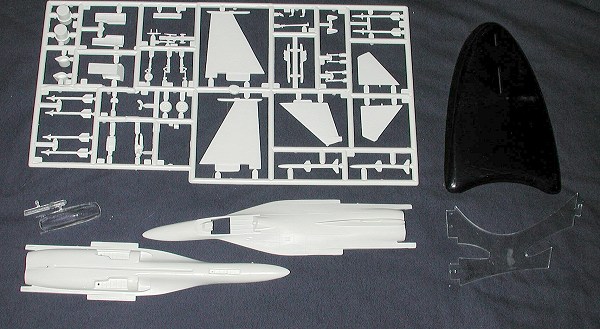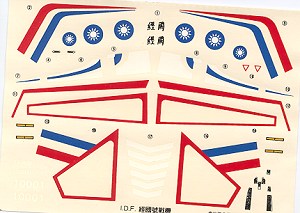
| KIT: | Kiddyland 1/72 IDF |
| KIT # | ? |
| PRICE: | ? |
| DECALS: | One option |
| REVIEWER: | Scott Van Aken |
| NOTES: |

| HISTORY |
The first single-seater IDF prototype rolled off the assembly line on Dec. 10, 1988, and was christened by President Lee Teng-hui the "Ching-kuo IDF fighter-interceptor" in memory of the late President Chiang Ching-kuo, who first broached the development project in line with his policy of developing self-reliant defense technology for the nation.
The Air Force originally planned to buy 250 IDFs. After striking the F-16 and Mirage deals with the United States and France, respectively, the military cut its IDF order to 130 planes.
In addition to IDFs, the Air Force has also taken delivery all the 60 Mirage fighters and more than 100 F-16s. The three types of warplanes now form the backbone of the ROC's second-generation warplane fleet.
The military has formed two IDF wings which are deployed at the Taichung and Tainan air bases. The IDF can be armed with locally developed Tien-chien (Sky Sword) I air-to-air short-range missile and Tien-chien II medium-range missile and many kinds of powerful bombs.
| THE KIT |

Molded in white plastic, the kit has engraved panel lines and is somewhat reminiscent of a Hasegawa F-16 in the way the parts are molded. However, this is where the similarity ends as the Kiddyland kit is a lot more basic that what is provided by Hasegawa. There is good wheel well detail and no real problem with sink areas or ejector pin marks. However, the mold seams are a bit heavy and all parts will require clean-up prior to use.
The cockpit is rather basic with just a plain tub and a somewhat generic seat. Instruments are provided with decals. There is no control stick and a pilot is provided to fill in the cockpit. M issiles are now well formed and should be replaced by something from the spares box. Unusual in today's kits, this one comes with a large display stand.
issiles are now well formed and should be replaced by something from the spares box. Unusual in today's kits, this one comes with a large display stand.
Instructions are completely in Chinese with color references in either Kiddyland or Tamiya colors. A small sheet in English is provided, but it provides only a history of the type, a set of warnings and a camouflage suggestion using three greys, obviously for the later production kits as the decal and painting guide are for the first plane in a very fetching red, white and blue color scheme. The decals are quite glossy and I'm not sure how opaque they are. Mine had curled into a tube so using them may require some recoating and careful handling when used. Fortunately, most of the colors can be painted on if it comes to that.
| CONCLUSIONS |
When I first found this kit at a swap meet, I was unsure of its scale. However, comparing it with both the Hasegawa 1/72 and 1/48 F-16s, it seemed closer to 1/72. I'm not really sure just how prevalent this kit is as I'd not seen it anywhere else. One thing for sure, it will definitely be something that you won't often see!
If you would like your product reviewed fairly and fairly quickly by asite that has over 250,000 visitors a month, please contactme or see other details in the